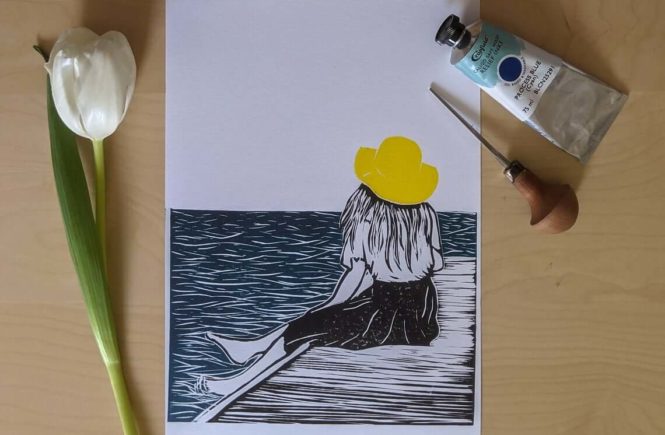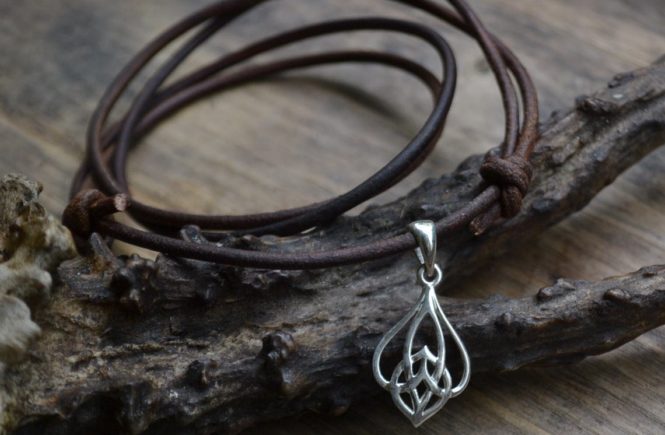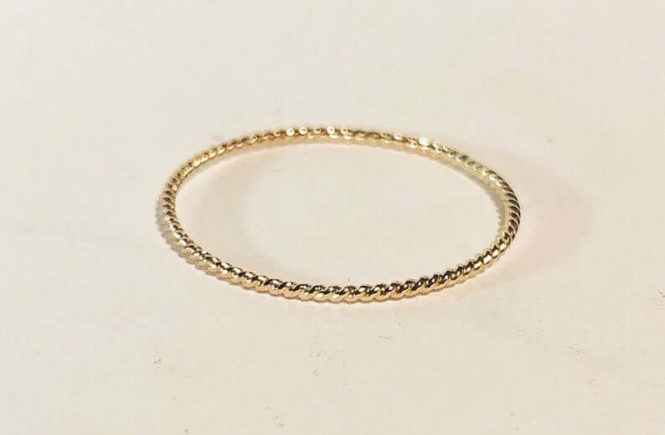[vc_row][vc_column][vc_message bb_tab_container=””]
Niche : Personalized Design
Shop link : https://www.etsy.com/shop/SirenPrints
Instagram : https://www.instagram.com/sirenprints
[/vc_message][/vc_column][/vc_row][vc_row][vc_column][vc_column_text]
Tell us something about yourself, how did you get started, do you consider yourself a crafter,maker,artist…
I’ve always loved being creative and crafty – as a kid, I was happiest when I was painting or drawing or making things, or just generally making a mess! As a grown-up, between my day job in marketing and all the other boring adult stuff like washing up and paying bills, I had lost touch with that side of myself a little bit.
Last Christmas, my mum bought me a linocut printing set in our family secret Santa. I opened it up on new years day to play around, and within a couple of hours, I was totally hooked. I started an Instagram account to share my progress, and I was lucky enough to find a photo challenge called #PrinterSolstice, run by a couple of amazing artists sharing weekly prompts with the printmaking community. It was a great way to challenge myself and encouraged me to try out some new ideas and continue carving, and it also leads me to discover so many amazing artists and printers sharing their work.
I consider myself a printmaker, although it’s not my main job – I still work full time, so printing takes place on whatever evenings or weekends I can spare. It might sound like a lot of work, but I love having a more creative outlet. I find printing very mindful and meditative – it gives me something to focus on that’s totally unrelated from work, and even though I love my day job, that’s certainly a welcome distraction!
How did you discover Etsy? Did you have any previous experience in selling handmade products? Why did you start selling online?
After a few months running my Instagram account, and some prompting from friends, I decided to open an Etsy store. A lot of the amazing printers I followed on Instagram are also Etsy sellers, and I had bought prints and other gifts on there in the past. Initially, I just wanted to see whether anyone would even be interested in buying them – it’s a big leap from a like on Instagram to an actual sale, after all!
Etsy seemed like the best place to get started as I wouldn’t have to invest time and money creating a website, and there was a ready-made audience I could appeal to. There’s also a ton of resources available to help you optimize your store and sell your products, so I felt like there was a lot of potential there.
[/vc_column_text][/vc_column][/vc_row][vc_row][vc_column width=”1/3″][vc_single_image image=”100001037″ img_size=”737×737″ onclick=”link_image” css_animation=”appear” bb_tab_container=””][/vc_column][vc_column width=”1/3″][vc_single_image image=”100001036″ img_size=”737×737″ onclick=”link_image” css_animation=”appear” bb_tab_container=””][/vc_column][vc_column width=”1/3″][vc_single_image image=”100001035″ img_size=”737×737″ onclick=”link_image” css_animation=”appear” bb_tab_container=””][/vc_column][/vc_row][vc_row][vc_column][vc_column_text]
What products do you sell, what type of materials are used in your creations, how do you design your products, what makes your products stand out ?
I create and sell linocut prints. A linocut is a form of relief printing that involves sketching a design out onto a linoleum block, clearing out the background using carving tools, and then inking up the block and printing onto paper. My pieces are hand-pressed, rather than using a printing press or machine, so there’s a lot of elbow grease involved in transferring the ink onto the paper.
I love lino printing because it’s a very graphic style, and you can create really bold imagery alongside more subtle, textured pieces as well. You also never really know how it’s going to turn out until you pull that first print, which I find really exciting and fascinating. Every print has it’s own little marks and characteristics from the printing process, which means each one is a little bit unique – there’s something wonderful about that, in an age where so much of what we see each day is digital.
How was your experience in learning to craft, are you self-taught or did you have a mentor, how long did it take for you to be satisfied with your creations
I would say I’m self-taught in that I’ve never taken a class or a tutorial, but I have learned a huge amount from the printmaking community on Instagram. Seeing other people’s work and hearing about their process and experiences has been a major source of inspiration, and also reassuring when I’m not having a great print day. Sometimes, the print gods just aren’t on your side! The ink isn’t quite right, or the paper moves and smudges, or a million other little things just won’t quite work out the way you want them to. At first, I would get quite frustrated and wonder what I was doing wrong, but it seems like every printer just has days like that every now and then! I’ve learned to give up whilst the going is good and not take it to heart too much – every bad print is just as important in honing your craft as the good ones are, and often you’ll learn much more from the ones that don’t turn out.
What was your original goal when you opened up an Etsy shop? What impacted your decision to start selling online? Do you consider online selling as a side-job, full-time job or extra income to pay for your hobby?
At the minute, I would say my Etsy shop is still a hobby. Selling my prints allows me to pay for materials, which is amazing. I would love to turn it into a business, but I’m also a little cautious of turning something I love and get a lot of pleasure out of into something that feels like work. I’ve consciously stuck to creating pieces that fit with the style I’ve created and that I’m excited to work on, rather than creating things specifically because I think they will sell.
Did you have any fears or reservations before opening up your Etsy shop? Were you worried about profitability or product competitiveness? What are some concerns and questions you had before you got started? How did you overcome them?
It was hard to know how to price my prints at first – I looked at other people’s shops to find similar work as a baseline to start from. I purposely kept prices low to begin with to get a feel for which prints would be popular, and then I’ve slowly increased them as I’ve continued.
How long did it take for you to get your first sale? Did you ever thought you would make a lot of sales in the first year? What was a goal you were hoping for? How many sales an average you get per week?
My first sale came through within a couple of hours of opening my shop. I had a few inquiries from Instagram before opening and my first order from one of my followers. I genuinely did a little happy dance in my kitchen! I really had no idea what to expect, but six months in I’ve just had my 60th order, which is better than I ever expected. I average around 2-3 sales per week, which is manageable at the minute around my full-time job.
Do you have a job outside Etsy? If not, are you able to commit full-time to online selling? How does your typical day look like? How do you manage time?
I work full time as a Head of Marketing for a digital studio, so printing and selling take place in the evenings and weekends. I print small batches of 5-10 prints at once, so I have plenty of stock to hand to process and package up orders pretty quickly when they come through. I live down the road from a postbox, and my prints are all A4, so it’s super easy for me to buy postage online through Etsy and just drop off orders each day.
[/vc_column_text][/vc_column][/vc_row][vc_row][vc_column width=”1/3″][vc_single_image image=”100001033″ img_size=”737×737″ onclick=”link_image” css_animation=”appear” bb_tab_container=””][/vc_column][vc_column width=”1/3″][vc_single_image image=”100001032″ img_size=”737×737″ onclick=”link_image” css_animation=”appear” bb_tab_container=””][/vc_column][vc_column width=”1/3″][vc_single_image image=”100001031″ img_size=”737×737″ onclick=”link_image” css_animation=”appear” bb_tab_container=””][/vc_column][/vc_row][vc_row][vc_column][vc_column_text]
How does your manufacturing process looks like for e.g. your best selling product? Do you create products ahead of the orders? Do you customize your products, if so how? What are tools that you are using in manufacturing process?
The main tools for lino printing are my carving tools. These are small metal gouges, usually in a V or a U shape, in different sizes that you use to carve away the lino material. They’re similar to wood carving tools. I also have several ink brayers, or rollers, in different sizes, perspex sheets to roll the ink onto for smooth, even coverage, and a barren to help with hand pressing the blocks onto paper.
I don’t customise products much, but I do offer the option for people to request specific colours.
What is the biggest impact on profitability of your shop? How expensive are the materials you use? How do you price your products?
Linoprinting is a relatively inexpensive process. The biggest expense was buying the equipment at first, but with a bit of care, things like the carving tools should last me for years. Ongoing expenses include the cost of materials (lino blocks, ink, and paper), postage and packaging, and then the fees and marketing costs of running my Etsy store.
What inspires you when you’re creating? How do you get ideas for new products? What are some methods or tools you use to get creative?
My work is inspired by mythology and folklore, featuring modern interpretations of classical Greek and Roman goddesses. I begin by finding a reference image to work from, from my own photo library or using stock sites like Unsplash or Pexels. Sometimes I have a goddess already in mind, sometimes I find a really striking image and start from there. I try and think about how that particular goddess would translate into the modern world – for example, Aphrodite was the Greek goddess of love and beauty, born from the sea foam. In my print, she’s in a retro bikini, splashing in the waves.
Goddesses have traditionally spent a lot of time reclining on sofas, not wearing a lot of clothes, for most of art history, so I love the idea of reclaiming these myths and portraying them with a lot more agency, showing different facets of femininity.
Do you ship your product internationally? How do you handle postage pricing? What is average time it takes from the order to the delivery? Do you use free shipping? If so, why? How do you package your products?
I offer international shipping and a lot of my orders come from the USA. I offer free shipping in the UK and for international orders, I charge £2 inside the EU, and £3 beyond that. Based on that, it costs me a little over £1 to post each item.
I package each print in a tracing paper sheath – I try and avoid using plastic packaging, so this is a great way to protect the artwork with more sustainable material.
Are you worried about competitors? Does it impact your business in any way? If there are a lot of similar products, how do you make your own stand out?
I’m not particularly worried about competitors – there are a lot of amazing print artists out there, but everyone has their own unique style. The nature of linoprint means that even the exact same print could look completely different when created by two different printmakers!
How do you deal with disputes or bad rating/feedback? How do you manage presale and post sale communication and customer satisfaction?
I’ve been lucky enough not to have had any bad feedback or experiences for the moment!
Has selling on Etsy changed your life in any way? If so, how? Did you ever thought you would get this far with your shop? Have you ever been stressed dealing with customers and manufacturing products? How did you deal with that?
So far, I’ve really enjoyed my journey with Etsy. I love having an outlet for my creative side, and something that I can own and nurture outside of my day job.
How important is social media for your shop? What are some common tactics you use to promote your products? Do you spend money on ads outside of Etsy? How do you generate excitement/hype around your products?
Instagram has been really important for my shop, and is my main marketing channel. I share photos and videos of my process, as well as sharing finished prints, and I tag all of my products so people can click through to buy them. I don’t spend money on ads outside of Etsy at the minute, but it’s something I would consider in the future.
What are some things you don’t like about Etsy? If you could talk to the CEO of Etsy what recommendations would you tell him to improve sellers and customers satisfaction?
My only frustration with Etsy so far would be around analytics – although there are basic insights on the shop dashboard, they are very topline, and it’s hard to drill down into the detail. I guess that might be my marketing background talking!
What are some things you did to set your shop for success on Etsy? What is one lesson you learned the hard way?
I’m not sure I have anything to share for this one!
What piece of advice would you give to new or established sellers or those considering to sell on Etsy? How can they avoid beginners mistakes?
I would say, if you are starting from scratch, start small, test, and learn. Try different products, listings, photos, see what works and what doesn’t, and then scale up from there. I’ve been surprised by which prints turned out to be most popular – my bestsellers certainly aren’t the ones I would have expected!
[/vc_column_text][/vc_column][/vc_row]




